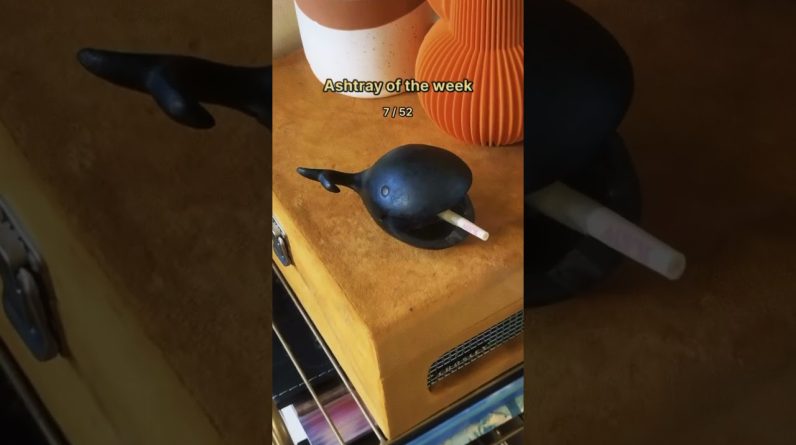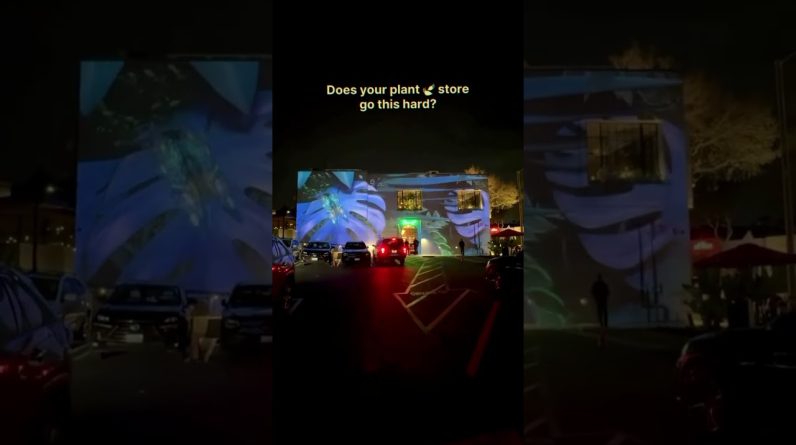We always want to make our Cannabis grow as healthy as possible. However, you need to watch out for specific factors that could weaken your homegrown weed. Some of these are poor strain selection, harvesting too early, improper lighting, buds being improperly dried and cured, and the presence of seeds in your buds.
Why is my homegrown weed weak?
How do you determine good and bad weed?
It takes a trained eye and nose to determine whether Cannabis is good or bad. You have to learn to identify high-grade and low-grade weed first as a foundation to being able to grow excellent weed.
These are the things that you have to look out for in order to grade cannabis.
Amount of Stem and Seed
One of the frustrations of Cannabis aficionados is to spend money only to find out that they cannot smoke half of the weight of weed because it has abundant stems and seeds. Stems are useless and will not help you at all in experiencing the high you are looking for.
Aside from stem, seeds are even worse! If you try smoking weed with lots of seeds, it will tend to pop when smoking and taste and smell very bad.
Thus, you will only enjoy a small quantity of the smokeable bud. For that reason, consumers desire to get seedless buds, also known as sinsemilla. It is known to be the highest quality and most potent grade of weed.
Smell and Taste
One of the indications of good weed is the clear and distinct aroma. Cannabis products with such quality are fresh and have excellent terpene content. When you grow Cannabis and harvest it on time and perfectly dry and cure it, you will surely get weed that has an unmistakable smell and taste.
On the other hand, bad weed has little or no scent. Low-grade cannabis buds often smell like freshly cut grass or hay. It is an indication that the weed was poorly grown and badly dried and cured.
Trichome Count
Trichomes contain terpenes and cannabinoids that give any Cannabis smokable a pleasant smell and taste. Also, it stores high effect and medicinal benefits. Thus, when Marijuana produces buds packed with trichomes, it indicates good quality weed.
High-quality buds have sparkling crystal trichomes. You may observe it with your naked eye, but it is better to use a jeweler’s loupe or magnifying glass to get a better look at it. During harvest, farmers reap Cannabis that has sparkly, milky white color trichomes. When you get a better look at it, you will observe that these trichomes resemble tiny bright mushrooms.
When trichomes are underdeveloped, you harvested your Cannabis too early. On the other hand, when the color of trichomes appears amber, it is a sign that you reaped your Cannabis too late.
Bud Structure and Trim
High-quality buds are plump, dense, sticky, and tightly packed. If your buds are airy and lean most likely they weren’t in the flowering stage for long enough or were lacking light or nutrients.
Growers have to trim the buds to remove fan leaves after harvest. However, some of them utilize machines for cutting weed at lightning speed. As a result, the buds have a mangled look because the trimming machines lack the ability to cut them with care, unlike manual trimming by humans. The buds become wrecked and trichomes may break and fall off making your harvest less potent. Thus, hand-trimmed weed is the most recommended.
What affects the potency of your Cannabis?
It is very frustrating to spend time, money, and effort growing Cannabis, and still. There are several causes for weak homegrown weed.
Poor Strain
A great strain of Cannabis will likely produce a potent harvest while growing poor genetics will give you a weak yield or potency no matter what you do. However, selecting great genetics alone won’t guarantee a potent harvest. There are many other factors that have to be addressed.
Harvesting Too Early
Do not be tempted to harvest early or you will end up with a poor harvest. The easiest way to check if your plants are ready to harvest is to have a look at the trichomes with a magnifying glass. You should wait until the pistils start turning from white to an orange or amber color.
Poor Lighting in Flowering Stage
Cannabis that does not get enough lighting during the flowering stage will have tiny and airy buds that are not potent and will not give you strong effects. Keep in mind that you want to stay below 12 hours of light exposure per day or your plants will re-enter the vegetative stage.
Instead, focus on getting your plants as many lumens of light as possible without causing heat damage or light burn. Keep in mind, that red light is your plant’s best friend during the flowering stage.
Buds Dried Improperly
You have to slow-dry your buds for 7 to 10 days after harvest to make them, aromatic, and smooth. Avoid drying your harvest under a fan, as this will dry your buds too fast and will reduce cannabinoid and terpene potency. You also want to make sure your harvested buds aren’t drying too slowly or they will get moldy.
Skipped Curing Process
The curing process is when you fine-tune your buds’ moisture contents. This will strongly affect the flavor and the smoothness when smoked. While this step might seem insignificant as you have already dried the harvested buds you shouldn’t skip this part. The drying process is only making sure the harvested buds are dry enough to store them. Proper curing is required to ensure a good smoking experience.
Seedy Weed
Seeds aren’t only uncomfortable to smoke, if they are present it means your plants’ cannabinoid potency has been diminished due to pollination.
Seeds only occur if your female cannabis plants have been exposed to the pollen of male cannabis plants. Pollinate female cannabis plants produce less potent cannabis buds that also contain seeds.
If there are seeds in your harvest, you probably failed to remove any plants that turned out to be male, or some of your female plants were under enough environmental stress to turn into hermaphrodites, and pollinated themselves or other female or hermaphrodite plants in their proximity.
If you want to learn more about hermaphrodite Cannabis plants you should check out our post: How to tell the sex of a cannabis plant? More specifically the subheading: What are hermaphrodites or hermies?
Amount of CBD and THC
CBD is known to moderate the effect caused by THC. Thus, weed cannot produce a solid psychoactive effect when the amount of CBD is higher than the amount of THC. If you want to to harvest cannabis that causes a strong euphoric effect make sure you pick a strain with genetics that tend to be potent in THC and low in CBD.
How to increase the potency of your Cannabis?
Producing high potency weed needs some experience. However, if your weed grows weak, there are a few things you can do to correct it.
Provide Quality Light in Flowering Stage
Like all plants, light is also essential to Cannabis plants. The vegetative light cycle of Cannabis happens at the start of plant growth. It lasts between 3 to 16 weeks, and the vegetative stage needs a full-spectrum light for 18 hours and 6 hours of darkness.
Light is used to power the growth of buds and THC content. During the flowering stage, cannabis plants require very bright light. Therefore, use bright grow lights like LEDs in your indoor setting to produce high levels of Cannabinoids.
Red light spectrums are what move the needle most during the flowering stage.
Anyhow, many novice growers focus too much on light and forget how important darkness is during the flowering stage. Make sure there is no light at all bleeding into your grow tent when the grow lights are turned off. Otherwise, it might cause stress to the plants or even send them back into the vegetative stage.
Regulating pH Level
Values lower than 7.0 mean acidity and values larger than 7.0 mean alkalinity on the pH scale. A pH level of 5.8 – 6.2 is appropriate for Cannabis growing in soil or coco coir, but the recommended pH standard is 6.0 to 6.5. Cannabis plants attain nutrients within a small pH window, about 6–7. If the pH is lower or higher, your plants might not get adequate nutrients even if they are present in your soil or water. Nutrient insufficiency will cause weakness, leaf discoloration, and stunted growth. To monitor the pH of your cannabis plants, you can buy a pH tester such as a digital pH pen or pH Measurement Kit with drops or strips. We recommend this pH tester.
Providing Nutrients
Cannabis plants need adequate nutrients to grow healthy and produce good-quality buds. Macronutrients such as Nitrogen, Potassium, and Phosphorus are required as their primary nutrients. Some micronutrients are also essential such as Copper, Magnesium, Iron, and Calcium.
Usually, these nutrients are divided into "grow" solutions and "bloom" solutions. During vegetative growth, more nitrogen is needed. Therefore, giving "grow" solutions high in nitrogen is recommended. For flower development, "bloom" solutions high in phosphorus are recommended. Before harvest, start flushing by making sure to give your cannabis plants only water to avoid nutrient buildup in the buds.
Regulate Room Temperature
Proper temperature can enhance color, scent, density, and trichome production. Keep the temperature within 60° to 80° Fahrenheit (16° to 27° Celsius) during the flowering stage. Ensure the correct temperature and humidity during this stage to avoid molds, mildews, and bud rots. It is best to keep the humidity at around 35-45%.
On-Time Watering and Harvesting
Water helps your cannabis plants to absorb the nutrients from the soil. Watering your cannabis plants every two to three days is highly recommended.
Another factor that can affect the level of THC is harvest time. If you harvest buds too early, you might reduce their potency. To determine if your weed is ready for harvest, observe if the pistils turned into a darker color and curled.
Low-Stress Training
Light leaks during the vegetative stage can stress your plants and disrupt crop growth. To prevent this, you can try low-stress training (LST). LST is a technique that manipulates the shape of your cannabis plants to produce better yields. To do LST, gently bend and tie down the branches and stems of your cannabis plants. In this way, the Cannabis will grow at the same height and achieve better light distribution. Thus, it can create more viable buds and larger yields.
How do you utilize what disappoints your expectation?
There are always instances when your weed does not live up to your expectation. I know, it is disappointing. However, please do not throw them away because there are ways to save and enjoy them.
Drying and Curing
When your weed appears bright green or wet, it indicates uncured and freshly harvested Cannabis. The best thing you should do is dry and cure your weed. In addition, it can also smoothen and make your weed more aromatic.
However, this advice applies when your weed is fresh and has not yet dried and cured. When your weed is a few weeks old, this process will not be as effective any longer.
Turn Weed to Hash
Another way to utilize your less potent weed is to turn it into hash or another concentrate. Hashish or hash is a form of Cannabis created by compressing trichomes.
You can learn more about this in our post: how to make hash?
Turn Weed into Edibles
Edibles are Cannabis-infused foods or drinks. They come in various forms, from gummies to brownies. For more information regarding edibles and how to make them you can read our post: how to make weed brownies?
The post Why is my homegrown weed weak? appeared first on Weed-Smart.
Source: https://weed-smart.com/why-is-my-homegrown-weed-weak/






